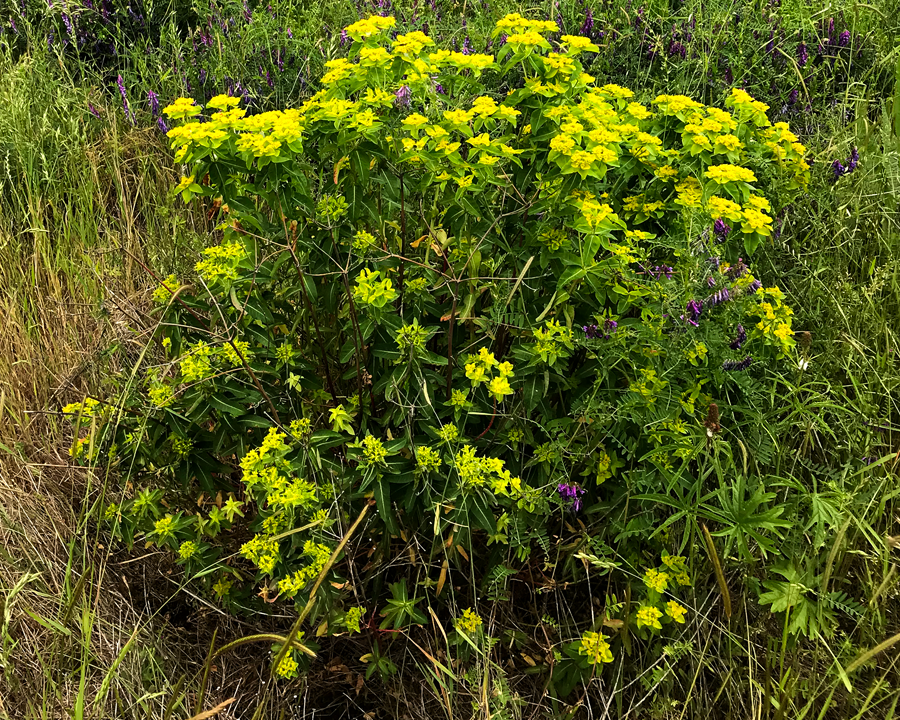Introduced species: Oblong spurge (Euphorbia oblongata)
Characteristics: A hairy perennial native to southeastern Europe and western Asia, oblong spurge can be found as an introduced species in Washington, Oregon and California. Growing 0.5 m – 1 m (1.5 – 3 ft.) tall, and producing up to 20 stems from a single rootstock, its leaves are narrowly oval-shaped, 4-6 cm (roughly 2 in.) long, with finely-toothed margins. Inconspicuous flowers are held in a set of showy yellow bracts, with the inflorescence appearing as a loose, terminal umbel anytime from March to August. A spherical capsule, roughly 0.5 cm (less than ¼ in.) across, contains the smooth brown seeds. Like most species in the genus Euphorbia, oblong spurge contains a milky latex sap that is toxic to mammals if ingested, and causes skin irritation.
Spread: Oblong spurge spreads primarily by seed; the ripe seed capsules explode, ejecting seeds up to 2 m (6 ft.) away from the parent plant. Originally introduced as an ornamental, this species has spread readily into natural areas, where it competes with native plants while offering no value to wildlife due to its toxicity.
Control: Small infestations can be dug up by hand; this is best done in spring, when the soil is moist and the seeds have not yet formed. Be sure to wear gloves and other protective gear, so the sap can’t get on your skin. The plant should be bagged and put in the trash (not into compost, as root fragments can resprout).
Native replacement: Oregon sunshine (Eriophyllum lanatum) is a low-growing, long-blooming perennial native plant with yellow flowers that will do well in conditions favored by oblong spurge.


